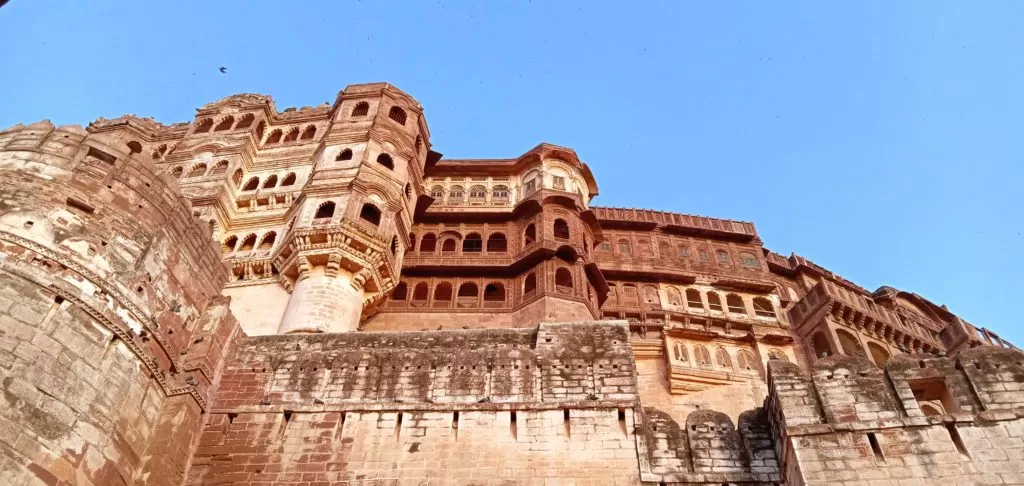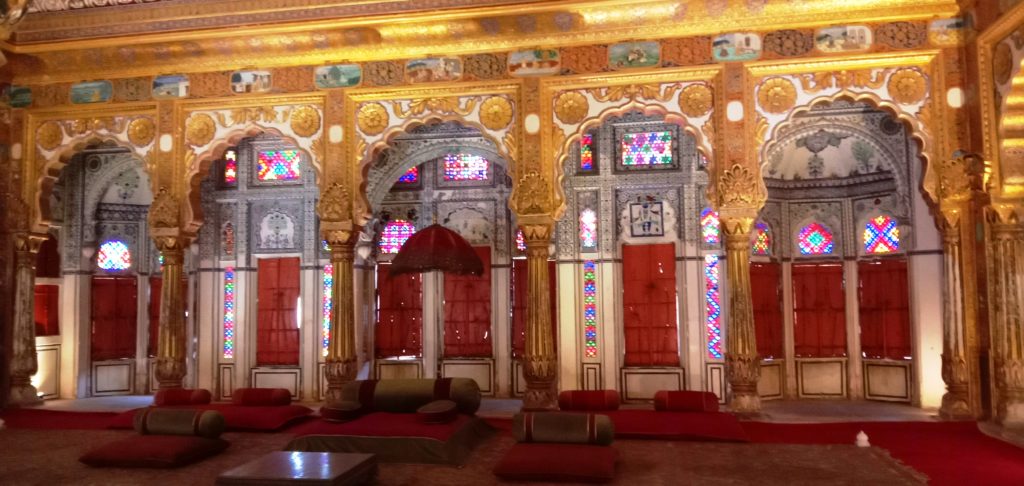The second largest metropolitan city of Rajasthan is Jodhpur. It is one among the most popular places to visit in Rajasthan. Rajasthan tourist places are no doubt rich in their cultural and socio-ethnic heritage that makes it stand exclusive from other states of the country. Set in the landscape of Thar Desert and the mighty Aravalis, ‘Sun City’ and ‘Blue City’ are the other popular names of the capital of Marwar. The realm is named ‘Sun City’ as it experiences hotter days during most part of the year. Next, it is also called ‘Blue City’ because all the houses in the old city are painted blue. There are many reasons behind dying the walls blue. Some people utter that it protects the residents from strong heat of the desert, some say that the color keeps termite away while some others say that the blue walls indicate the houses of upper caste people. Whatever the reason might be, the blue houses and its roofs has become an individuality of Jodhpur. Among many other places to see in Jodhpur, Mehrangarh Fort is the mightiest of all that stands on the cranky cliffs of Aravalis. This UNESCO world heritage with a lift facility stands 125 feet above the city skylines and can be perceived from any bend of Jodhpur. Here I have penned down my personal experience from my last visit to the renowned citadel of Rajasthan and is utterly unique in every way.

The fort was built in 1459 by Rao Jodha who belonged to the Rathore clan. The fort derived its name from Mehr-Garh or Mihir-Garh where ‘Mihir’ referred to the Sun and ‘Garh’ implied abode. The cliff on which the fort stands today is popularly known as ‘Bakurcheedia’ meaning hill of birds. A hermit used to stay at the crags during the period when Rao Jodha decided to build the bastion. As the hermit refused to relocate from the cliff, Rao forced him to do so and a terrific curse fell upon Rao’s estate. The saint cursed Rao that his entire state will face severe drought conditions and folks here still believe that Jodhpur till date faces scarcity of water owing to the saint’s curse only.

The extensive castle has seven gates or ‘Pols’, each marks the victory of the ruling Rathods over their enemy. Few gates still bear the imprints of the cannon balls that were fired by the attacking armies. The palaces inside the fort are a real splendour. A few to mention are ‘Sheesh Mahal’ (The Palace of Mirrors), ‘Daulatkhana’ (The Fort Treasury), ‘Moti Mahal’ (Pearl Palace), ‘Takht Vilas’ (Royal bedroom) and Phool Mahal (Flower Palace). Then there is a palace named ‘Janani Deodi’ or ‘The Room for the Females’ which were exclusively built for the Royal women and kinsmen were not allowed stepping in. Some of the fort palaces have been transformed into gorgeous and opulent museums which display both Marwar and Mughal centrepieces. There is a 200 year old garden called the Chokhelao Garden. The ancient garden is a moment of freshness and relaxation amidst the ancient erections of Rao Jodha. The view of the fort and the city from this point is simply breath taking and the open olive plot provides some unique vistas of the air.



The ‘Kul Devta’ of the Rathores is Ma Chamunda; the incarnation of Goddess Parvati. A white domed temple dedicated to the Goddess is located at a stone’s throw distance from the main citadel. Special darshan and homages are arranged during Navaratri when hundreds of tourists visit the shrine.
Next comes the most mandatory part of travelling! Yes, shopping! Just as one crosses the walls of ‘Janani Deodi’, the studio of the Royal ladies you step into the most colourful slice of the fort. It’s the Craft Bazar. It is a small space where six to eight shops are seated side by side. As my eyeballs rumbled around, I observed leather shoes and sandals, skin wallets and bags, ‘Bandhni’ and block printed sarees, suit pieces and scarfs, lacquer bracelets and bangles and jewellery made from dead camel bones were displayed for a sell. Customized tees, caps, stone works and stoles were also put on for a handsome price for the customers.

The fort has several cafes inside its boundaries that ensure fine dining to the travellers. Few to name are Palki Café, Mehran Café and Chokelao Garden restaurant (this is one of the luxurious hotels in Jodhpur as well). Drinks, sandwiches, bakeries and meals are the main options served here. The prices at these outlets are a bit higher than the normal but if you want to enjoy a royal palate, no doubt these are the perfect jaunts for you. The fort also hosts zip line activity. The activity booking office is at Chokelao Garden. The zip lines are almost 250 meters long and lasts for more than an hour. The stretched sagging lines will guide you through some of the extraordinary views of the historical monuments and edifices of Jodhpur which will indeed be a lifetime experience of yours.
Various fairs and festivals are also held in this historical fort throughout the year. Among them, ‘Rajasthan International Folk Festival’ and ‘World Sacred Spirit Festival’ are the two famous fiestas that attract hundreds of nomads across the globe. Folk performances and shows are organised in the fort premises where artists from every corner of the state gather to showcase their talent.
How to reach:
Jodhpur is well connected by buses and trains with the nearby cities. It has an international airport and a railway junction which connects the city with parts of the country.
Other points to remember:
- Entry ticket to the fort: INR 100 (for Indians)
- Ticket for lift (only while ascending the fort): INR 50
- Audio guide ticket: INR 180
- Personalized guide up to four persons: INR 400
- Ticket for zip line is not included in the fort ticket and one has to buy them separately.
